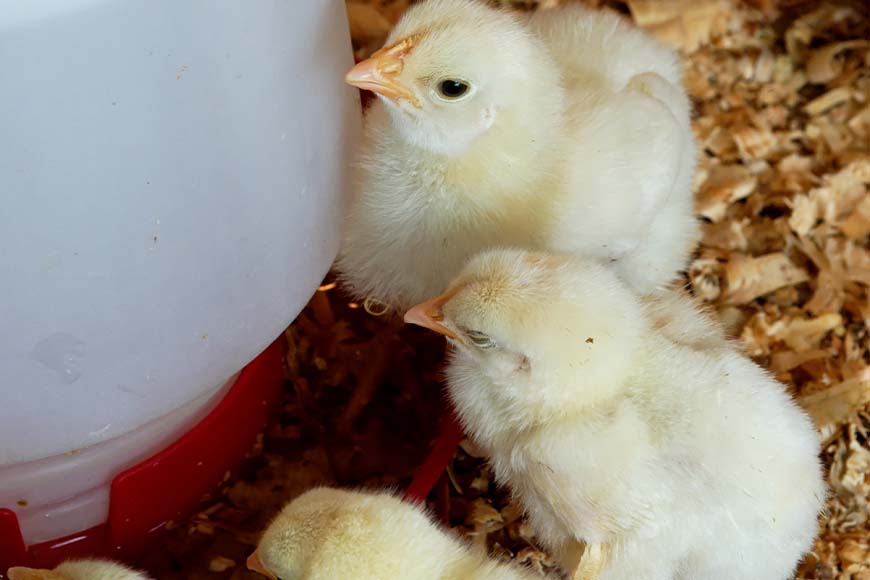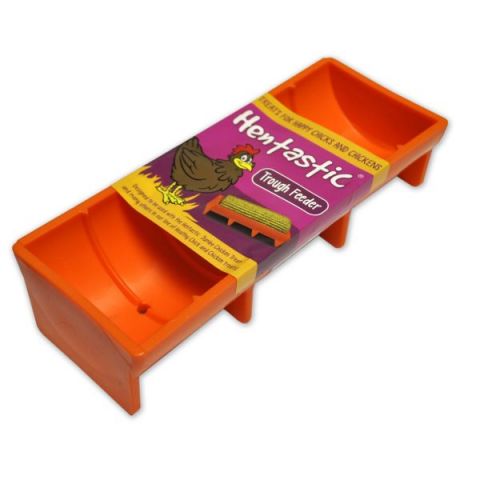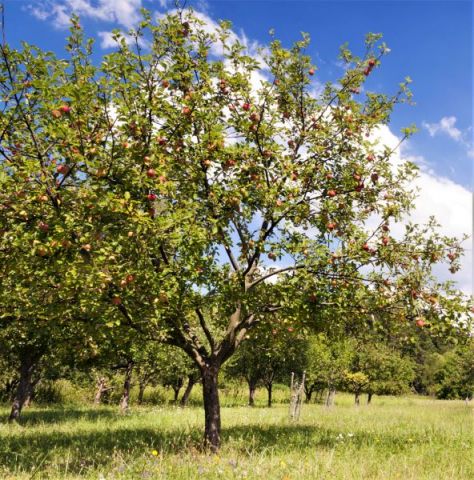
Finding your way into gardening to learn how to grow your own food can come about for a variety of reasons.
There are those that have been helping, tending, and harvesting with grandma or other family members since they were little. For them, gardening is just something that is a part of their normal life, they have a pretty good understanding of the basics to grow, harvest, and cook from the garden. Some of us come across gardening through a friend, or possibly when we purchased a new home and it had a small plot in the backyard. Whichever way you get here, eventually everyone becomes some type of gardener in their life.
Now 2020 hits and a lot of things abruptly change, due to staying at home orders, cancelation of our schools and universities, changes in our gyms and restaurants, as well as a change to how we manage our grocery stores, and for many, a big change came from working at home. Maybe it would have happened either way, with or without coronavirus, but it seems gardening is here and at the front of our minds.
A lot of us are getting back into gardening, or at least getting a succulent from a friend it's hard not to, they are everywhere. If this is true, there must be a large number of us wondering what are the possibilities and what wonderful things can I learn to grow, tend, harvest, and cook our own food and raise eggs, bees for honey, or even a milking goat in my backyard?
Eventually, Instagram will be flooded with posts about our favorite flowers, pesty pests, giant zucchini and so many more treasures we find from our gardens.
Yet for anyone who is getting into the idea of growing or raising their own food for self-sufficiency and has no idea where to even begin, well here is a list of a few systems that might be just what you are looking for. They range from growing vegetables in the garden to backyard chickens and raising fish because If growing tomatoes in the garden isn’t for you maybe raising fish in a small aquaculture system could be, or if they actually they both sound great, well that’s just aquaponics.
There are a lot of different ways you can go about growing plants or raising livestock in your life, but always check with your landlord, city ordinances, or other local laws so that you know what is and isn’t allowed where you live, the raising of chickens or bees or even having a garden might be okay someplace, and other not so much. And if that’s the case, where you can’t raise bees or chickens or have a garden, you can reach out to local governments and community organizations to start working to make a change that allows for more food resiliency and backyard agriculture.
Gardening
Gardening is the practice of growing, tending, cultivating, and harvesting plants. Gardens can range from ornamentals and succulents to root vegetables, leafy greens, fruits, nuts, as well as flowers, herbs, and medicinal plants. If not everyone, then almost everyone is familiar with this term. it’s usually seen as small scale and hobby like in practice. Gardening is often as much about growing the plants as it is about being connected with nature and taking part in a relaxing experience. When I think of gardening, I picture a raised bed in front of the house or a small plot in the backyard.
Gardeners maintain healthy and productive soils that produce good yields and beautiful by building organic matter and harboring beneficial bacterial and fungi, through the use of cover cropping, mulching, and fertilizers. Gardeners also have an array of weapons at hand to take on pests. These range from homemade compost teas from vermicompost to conventional spray that will wipe out everything. The tools vary, but the basics are the shovel or spade, a hoe, rake, trowel, and a few hand tools, pruners, scissors, stakes, and twine, as well as a rain gauge, hose or rain barrel and watering, can and some soil sampling kits.
Keeping good records and learning from mistakes is the way of the gardener. Along with the above-listed tools and some tenacity to push forward the benefits of gardening will be endless.
Backyard chickens
One of the most popular trends after the coronavirus pandemic was the interest in raising backyard hens for eggs. And if you are considering this, I fully support you! But there are a few things to consider, and possibly a bit of legal work you will have to go through to make this happen if you live within the city limits.
First, you need to make sure it's legal to keep backyard birds where you live. This can be as easy as checking your local ordinances or speaking with the local government to find out how you go about the process of obtaining a permit for chickens. That is what I had to do and it involved a detailed plan of where my chickens were going to be kept, how many chickens, for what purpose, as well as signatures from neighbors informing them that they were notified of my intent to raise chickens and that they can attend the hearing of my case with the city council. This isn’t there for your neighbor to go and say, “NO”, but to speak their mind, such as “ if they are going to put the chickens in that location I would like there to be a fence to block my view” or other minor issues that the council can take into consideration. This doesn’t mean they will agree to everything your neighbor wants, but they will hear them out.
If the above is not the case and you don’t need to jump through any hoops to get chickens, you’re in luck, it’s going to be a lot easier to get started.
But you will still need to consider what you are going to feed them, how many you can handle, how are they going to fair in the coldest conditions and the warmest conditions your location will throw at them, and everything else. It’s important to know your plan and get your bird's living area set up well before you bring them home. Stress and unhealthy conditions can cause serious issues, low egg productivity, and even death.
The more you socialize your birds with you and your family, the more comfortable they will be. Also, consider that in the world of backyard chickens often less is better. A lot of us don’t eat as many eggs as we want to think we do. Even if we plan to give them away, sometimes we can be overwhelmed with the number of eggs. So, keeping at least 3-5 birds and building your backyard chicken home with that number In mind so they have companionship if an ideal place to start, and if you have the right neighborhood, you can put out an “egg for sale” cooler for other to enjoy(and cover the cost of feed).
Patio gardening
For me, patio gardening is where I keep my citrus, coffee trees, and other cold-sensitive plants that I will bring in during the winter months. For many, the patio might be your only option for an outdoor growing area, yet that doesn’t mean you are limited in the options available to you. The patio can be used as either a seasonal grow area, possibly potting up tomatoes, peppers, cucumbers, carrots, and other garden vegetables, keeping houseplants or others on during the growing season, or even as an apiary. The last is true, or at least I have read of tenets keeping bees on their high-rise patio. bees are quite harmless and will leave you alone, so much you give them a runway into their hive free of obstacles and human traffic, which a balcony can offer. So, anyone who doubts what even a north-facing high-rise balcony can offer has never kept bees on their balcony! However, bees are not for everyone.
Most of us with a little bit of outdoor space on their patio, a few pots, and a watering can will enjoy watching the fruits of their labor grow and blossom on our little patio. There are gadgets as well as containers made specifically for patios. You can tech out your small patio growing systems with vertical towers and drip irrigation that can be monitored from your iPhone to simply keeping a few specially designed pots to help create a cleaner patio area and more productive small space. Put out a small bird feeder and keeping a pet camera connected to your wifi and pointed at your outdoor oasis so you can watch what happens during the day.
Hydroponics
I first heard the term hydroponics during a high school class called Astrobiophysics, in that we explored and built this type of growing system that could be used in space to growing of plants. Hydroponics works by bathing the plant's roots in a nutrient and pH balanced in a container or any way to support the plant above the nutrient solution. In this system, the grower introduces all the nutrient needs the plant will need with various water-soluble fertilizers and pH balancers. The system is monitored daily for changes in temperature, pH, and other nutrient levels. Hydroponics is usually done indoors to control all aspects of the growing environment with added light sources ranging from High-density discharge or LED lights.
Hydroponics usually uses materials such as rock wool or coconut fibers to grow the plants. The plants are seeded much like any transplant we would put into the garden, except that the root mass will be suspended into the nutrient solution, and the roots allowed to grow into this solution. Over time the roots will grow along with mass that is able to uptake a large amount of solution allowing large and fast and controlled growth of desired plants.
You can set up a hydroponic system to be a single plant, such as a tomato growing out of a 5-gallon bucket, to a series of 10-foot tubes. Hydroponics can be as simple as growing lettuce in a nutrient solution that’s suspended in a mason jar located in a windowsill or under a grow light.
I even think about my dwarf citrus tree as a hydroponic hybrid growing system, everything that tree is going to get to grow 6 feet tall and produce a few pounds of citrus a year is going to be limited by what I put into the system, whether the fertilizer is liquid or not. That tree is going to get nothing but what I put into the system for nutrients to the roots, which is the same in a hydroponic system.
Aquaculture
This is the practice of raising fish, clams, shrimp, or other aquatic-based life in a controlled system. Simply put, anyone who has kept an aquarium or a backyard pond has practiced aquaculture. Aquaculture can be done indoors or outdoors and Like many systems, it can be big or small, for food or for the enjoyment of it.
For anyone who hasn’t thought about it, but has kept fish as pets could be raising perch or another fish as well. Learning to keep fish can be a huge bump on the self-sufficiency scale. I believe this because it’s an easy and cheap way to produce protein in our diets. Anyone who has a pond on their property can start raising a batch of fish to stock their freezer.
Organizations and businesses have now come to growing and hatching baby fish, or fingerlings, that you can easily order by the few or thousands and stock into your pond to achieve season harvests of fish. Depending on where you are located and what you have access to there are hatcheries across the country that can supply you with fresh stock. You can even take your hand at breeding and hatching your own fry, thus having a renewable and sustainable food source right in your backyard.
Aquaponics
If we take the last two systems and blend them together, we get aquaponics, the raising of fish and plants in the same system. In this system, the waste from the fish feeds the plants, and the plants clean and purify the water for the fish. It’s a perfect looped system, with basically the only addition to the system being the food that is fed to the fish (which is why fish feed so important in this system). In aquaponics, we are able to get both fish and plants from one system.
Aquaponics can be as simple as putting a soilless grow bed above your fish tank and pumping the water up into this grow bed and allowed to drain back into the tank, to a multiple acre facility that grows fish is giant tanks and filters that wastewater through a serious of grow beds in greenhouses.
The types of fish you raise in your tank might depend on your personal preference or on the type of plant you are growing in conjunction with. The most popular fish in the past few years has been the tilapia, and this is because tilapia is widely adaptable fish. My favorite is the growing interest in perch for aquaculture and aquaponic use. Others that can be used are goldfish (not to be eaten), trout, bass, and salmon.
If you have the time to add this to your backyard growing adventures, I highly recommend it. The extra benefits you will get from having this onsite fertilizer for your garden, patio, and house plants would alone be enough to build or buy an aquaponic system. But to be able to grow a healthy and tasty protein and vegetables or fruit together in your backyard or home is pretty useful and quite enjoyable.
Agroforestry
Agroforestry is the production of crops using both forest management practices along with crop or pasture land. In this system trees and shrubs are grown within the rows and among the field crops or raised beds. By intercropping we are able to increase the lands biodiversity, water holding, and soil erosion abilities, as well as using nitrogen-fixing trees to increase soil fertility. Agroforestry crops are grown within rows of trees and among the trees. By intercropping and layering crops, we are able to increase total yields from our land. This uses the layering effect to increase per acre yield while putting nutrients back in the soil.
The trees are able to provide shade, fix nitrogen into the soil, reduce wind gusts, create microclimates as well as producing food crops such as hazelnuts, walnuts, pecans, and apples, pears, and other berries.
This is the first one in the group that doesn’t work as well in small apartments or limited growing areas. Although someone with ¼ acre can achieve a lot of the benefits that agroforestry has to offer, someone with an acre or more is going to really get the feel of what agroforestry can achieve. In both yield of produce as well as creating a personal connection with the land we live on; agroforestry can lead to one of the most pleasant growing experiences. Be ready for some initial hard work getting your agroforest established, but then sit back and enjoy how resilient and sustainable the system is.


